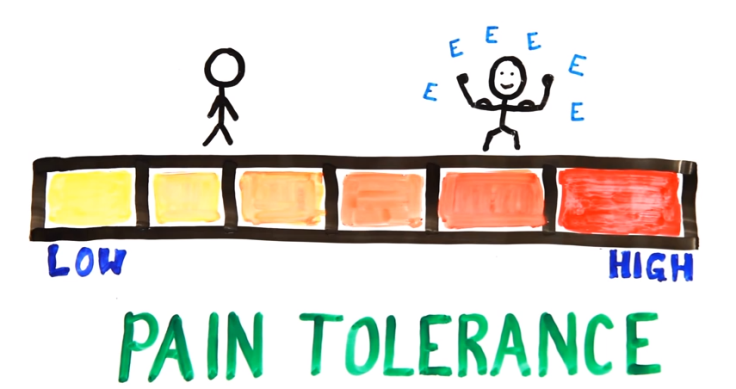No Pain, No Gain? The Science Of Pain Reveals Why Olympic Athletes Are Probably Tougher Than You

Broken bones are never a walk in the park — let alone a crusher of lifelong dreams. Due to unexpectedly warm temperatures in Sochi, melting snow has led to broken backs, jaws, legs, and wrists, not to mention a concussion or two. But Olympic athletes may have science on their side when it comes to fighting through those injuries, as a combination of genetics, lifestyle factors, and the environment predisposes athletes to better withstand pain than the schlub watching the Games on his loveseat.
When the nociceptors in our skin encounter a stimulus too intense to adequately respond to, a signal is sent to the brain and spinal cord that produces the perception of pain. Studying this amorphous perception in individuals is difficult for obvious reasons, so science does its best to gauge the approximate painfulness relative to standard responses. (That includes childbirth, fellas.) And despite the reliance on anecdotal evidence, a number of findings have emerged from pain management research.
Perhaps the oldest finding, dating back to a 1966 study from the University of California, Davis, is that athletes are largely better at coping with pain than less athletic people are. During exercise, the brain releases feel-good chemicals called endorphins. These endorphins are thought to mask pain and compel the highly-aroused body to fight through any damaging stimuli, be it a sprained ankle or runner’s cramp.
Alternatively, what drives Shaun White to compete through the pain and not the novice snowboarder could simply be a matter of genetics. Consider a 2009 study that showed redheads often need more anesthesia at the dentist because they have a higher tolerance for pain. Whatever the case may be, Olympic athletes are probably tougher than you are for one simple (less interesting) reason: They’re Olympic athletes.



























